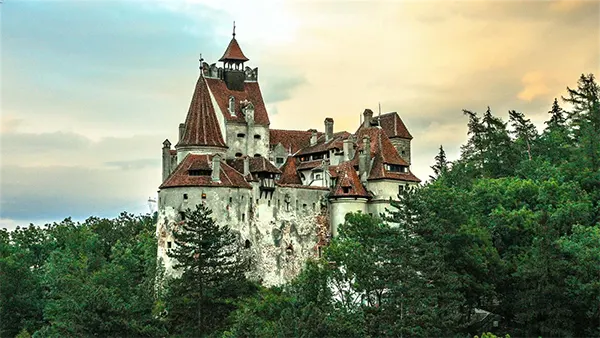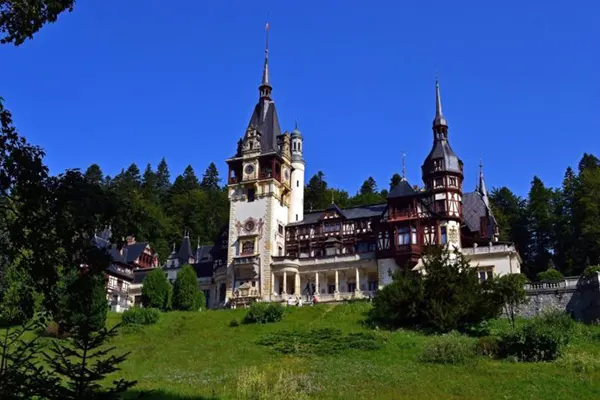Transylvania: Mountain Hikes, Medieval Castles and Dracula’s Traces in Romania

Transylvania, a storied region in central Romania, continues to attract curious travellers with its blend of pristine nature, Gothic landmarks, and folklore. Known for its ties to the Dracula legend, this area also boasts rich medieval heritage and some of Eastern Europe’s most spectacular hiking trails. As of June 2025, Transylvania remains one of the most underrated yet culturally and naturally rich regions to explore.
Mountain Hikes in the Heart of Romania
The Carpathian Mountains offer hikers a wide range of trails, from beginner-level paths to advanced alpine routes. In particular, the Bucegi Mountains are accessible and well-marked, attracting nature lovers and wildlife photographers alike. The air is fresh, the altitude manageable, and the biodiversity impressive — hikers often spot chamois, foxes, and eagles along the way.
Făgăraș Mountains, home to Moldoveanu Peak (Romania’s highest point at 2,544 metres), attract seasoned hikers from across Europe. Trails such as the Transfăgărășan ridge route are ideal in summer, providing stunning views of glacial lakes and wildflower meadows. Camping is legal in most areas, and cabins are available for those seeking shelter overnight.
For a more secluded adventure, the Apuseni Mountains in western Transylvania offer karst formations, underground rivers, and tranquil landscapes. The Scărișoara Cave, housing one of the world’s oldest underground glaciers, is a unique natural attraction that can be accessed year-round with a local guide.
When to Go and What to Pack
June through September is considered the prime season for mountain trekking. Weather conditions are typically stable, with daytime temperatures ranging from 18°C to 25°C. Light thermal layers and waterproof jackets are recommended due to sudden rainstorms common in the region. Hiking poles and durable boots are essential for routes with rocky elevation.
Many trails are accessible via Brașov, Sibiu, or Cluj-Napoca, making them suitable for day trips. Travellers should always check weather forecasts and trail status before starting any climb. Mobile coverage in high-altitude areas is limited, so printed maps and GPS devices are recommended for safety.
Eco-conscious tourism is growing in popularity. Local initiatives promote sustainable hiking by maintaining trails and providing eco-refuges. Tourists are encouraged to minimise plastic use, follow leave-no-trace principles, and support rural communities through responsible spending.
Medieval Castles and Fortified Villages
Transylvania is dotted with some of Europe’s best-preserved castles and fortified churches. Bran Castle, commonly linked to Dracula, stands on a dramatic clifftop and features narrow staircases, hidden passages, and medieval artefacts. Despite the fictional association, the castle’s true history relates to Queen Marie of Romania and not Vlad the Impaler.
Corvin Castle in Hunedoara is a Gothic-Renaissance masterpiece with drawbridges, towers, and a fascinating dungeon. This castle is often overlooked by tourists but offers an authentic medieval atmosphere and fewer crowds than Bran. Guided tours provide insight into the history of the Hunyadi family and 15th-century military architecture.
Beyond castles, Transylvania’s Saxon villages such as Viscri, Biertan, and Prejmer preserve fortified churches protected by UNESCO. These villages reflect the multicultural heritage of the region and are actively being restored with help from local communities and conservation groups. Visitors can even stay overnight in restored village houses and learn traditional crafts from local artisans.
Cultural Tourism and Local Events
June marks the beginning of many heritage festivals throughout Transylvania. Events such as the Medieval Festival in Sighișoara or the Fortress Days in Alba Iulia draw thousands of visitors every year. These celebrations feature jousting shows, folk music, and medieval workshops that offer immersive experiences for families and history enthusiasts.
Travellers can enhance their visit by exploring Transylvanian cuisine. Dishes like cabbage rolls (sarmale), polenta with cheese (mămăligă cu brânză), and plum brandy (țuică) are served in village inns and local guesthouses. Most venues cater to vegetarian diets and serve home-grown ingredients.
Artisan markets provide a chance to support the local economy by purchasing handwoven textiles, pottery, and wooden icons. These goods are often created using traditional techniques and reflect the region’s Hungarian, Saxon, and Romanian influences.

The Dracula Myth and Historical Truth
While Bram Stoker never visited Romania, his novel immortalised Transylvania as the home of Count Dracula. Bran Castle is widely marketed as his residence, though historians argue that Vlad III — also known as Vlad the Impaler — never lived there. Still, the eerie atmosphere of the site, combined with local folklore, keeps the legend alive.
The real Vlad III ruled Wallachia in the 15th century and was known for his ruthless tactics against Ottoman invasions. Poenari Fortress, perched on a cliff above the Argeș River, was one of his actual strongholds and can be reached by climbing 1,480 steps. Despite its modest size, it offers panoramic views and a direct connection to the historical Dracula.
Sighișoara, Vlad’s birthplace, is a colourful medieval citadel with cobbled streets and a preserved clock tower. Tourists can visit the house where he was born and walk the same alleys where Saxon merchants once traded. The town’s UNESCO status ensures that its architecture remains untouched by modern development.
Folklore, Superstitions and the Modern Image
Rural areas in Transylvania still retain traditional beliefs tied to spirits, nocturnal creatures, and protection rituals. These practices, rooted in Dacian paganism and Orthodox Christianity, contribute to the mystique that surrounds Dracula lore. Items like garlic amulets or carved wooden crosses are often seen in local homes.
Modern tourism sometimes blurs the line between myth and reality. Souvenirs and commercial tours may overemphasise vampire themes, but many visitors seek deeper historical understanding. Museums and guided experiences now aim to separate fact from fiction while preserving the allure of Gothic storytelling.
In 2025, interest in dark tourism continues to grow, yet responsible travel operators focus on education rather than fear-mongering. This shift helps maintain cultural integrity while satisfying curiosity about one of Europe’s most enduring legends.
